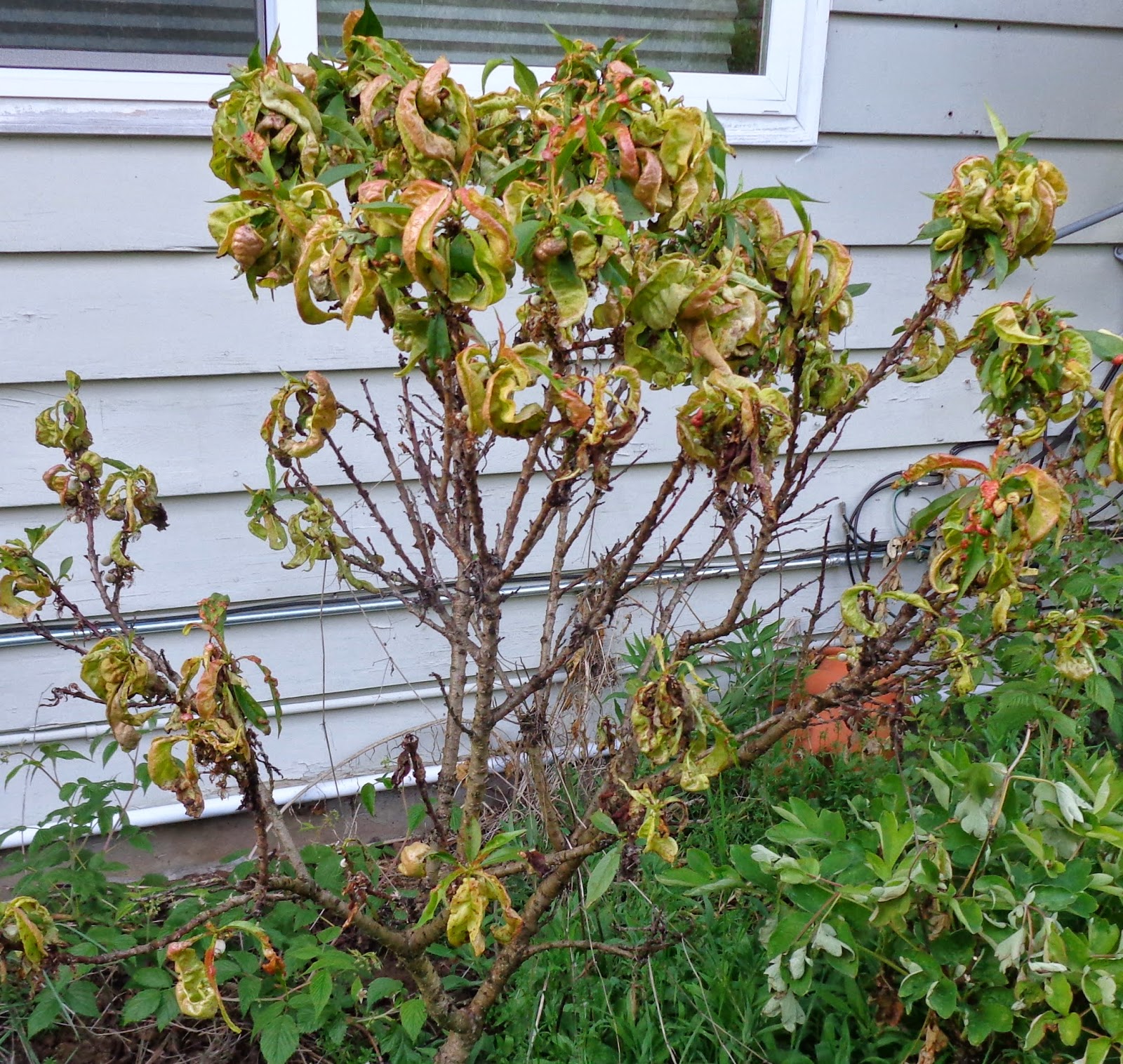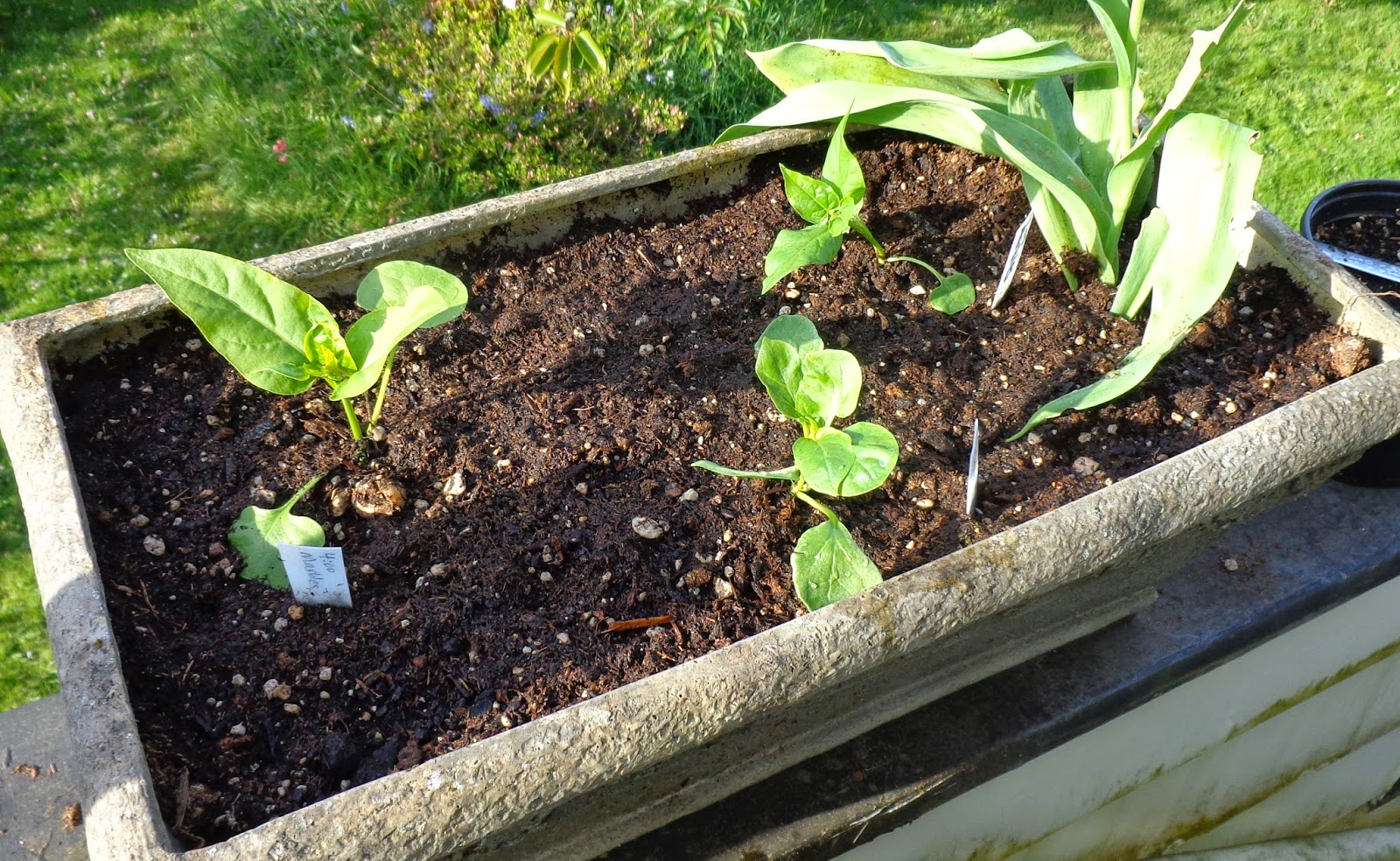 |
| Charlotte Peach |
This is
Peach Leaf Curl Disease season in my area. I have enough resistant peach varieties to make a comparison.
As of now, they all have peach leaf curl.
Charlotte seems to have the least, and looks like it will have a small bowl of peaches this year.
Oregon Curl Free has a bit more, and also looks like it will have some peaches.
Indian Free peach has a moderate amount of curl. It didn't bloom, except for one flower that fell off. I think
 |
| Charlotte Peach |
 |
| Oregon Curl Free Peach |
As for the
Genetic Dwarf peaches... anyone who sells them in the Pacific NW is doing their customers a big disservice. Photos are the varieties
Garden Sun,
Honeybabe, and
Ponderosa. They may make a comeback. The peaches will need a lot of thinning. It's too difficult to cover them to keep out rain, and spraying in the fall is difficult to time. Rainy season starts before the leaves fall. So they are going to get leaf curl each year, they look terrible and it has a big effect on peach production. The only solution I can think of is treat them the way hobbyists treat fig trees. Grow small, in containers, keeping them pruned small, root prune, and put them in garage or shed for the winter. Bring them outside when they start to grow. I might try that, maybe starting my own variety with seedlings. I have 2 seedlings in the garden beds, so that is a start. For what it's worth, one was in a covered bed, and has no curl. The other was exposed, and does have curl.
The seedlings might take a long time to bear. I don't know. But, being on genetic dwarf rootstock, they might also stay smaller than if grafted on regular peach rootstock.
Not pictured, the
Tri-lite Peach-Plum hybrid has as bad leaf curl as any of the others. The susceptibility of the peaches dominates the resistance of the plums. So it's not worth buying that one either.
 |
| Indian Free Peach |
 |
| Garden Sun Dwarf Peach |
I suspect that none of the Zaiger hybrids will be curl resistant. They are bred in California where the disease is not an issue.
 |
| Ponderosa Dwarf Peach |
 |
| Honey Babe Dwarf Peach |
Summary:
Less susceptible to peach leaf curl, but not immune:
Charlotte
Oregon Curl Free
Indian Free
Q-1-8 is in its first year. There is no curl, but as a bare root tree it was probably stored in a barn, and not exposed to winter rains which are responsible for spreading the fungal spores.
Highly susceptible to peach leaf curl:
Tri-lite Peach-plum
Honey Babe Genetic Dwarf
Garden Sun Genetic Dwarf
Ponderosa Genetic Dwarf.
Potential alternative:
Raise in container, keep small by pruning and root pruning, and move container into shed for winter, similar to fig hobbyists in cold climates. Or similar to my brugmansias and geraniums that I overwinter.
Thoughts.
Next year, buy one for the container treatment.
This year, try to pot up the two seedling trees so I can get them started, but it may be a long path and who knows if I will live that long.
One additional thought. Deer seem to stay away from most of the peach trees. They do take some bites out of Indian Free.


















